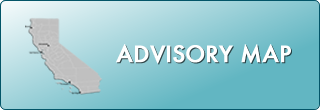Fish Advisory for Bishop Creek Offers Safe Eating Advice for Two Trout Species
FOR IMMEDIATE RELEASE:
SAM DELSON
(916) 764-0955 (C)
Sam.Delson@oehha.ca.gov
SACRAMENTO – A state fish advisory issued today for Bishop Creek in Inyo County provides safe eating advice for Brown Trout and Rainbow Trout.
Bishop Creek begins in the eastern Sierra Nevada and runs for approximately 28 miles, past the city of Bishop, before joining with the Owens River. The advisory covers the entire length of Bishop Creek, including its three forks -- the North Fork, the Middle Fork, and the South Fork.
The California Environmental Protection Agency’s Office of Environmental Health Hazard Assessment (OEHHA) used data from sampling funded by the Lahontan Regional Water Quality Control Board to develop the recommendations based on the levels of mercury and PCBs found in fish caught from the creek.
“Many fish have nutrients that may reduce the risk of heart disease and are excellent sources of protein,” said Dr. Lauren Zeise, director of OEHHA. “By following our guidelines for fish caught in Bishop Creek, people can safely eat fish low in chemical contaminants and enjoy the well-known health benefits of fish consumption.”
When consuming fish from Bishop Creek, women ages 18-49 and children ages 1-17 may safely eat a maximum of seven total servings per week of Rainbow Trout, or two total servings per week of Brown Trout.
Women ages 50 and older and men ages 18 and older may safely eat a maximum of seven total servings per week of Rainbow Trout, or four total servings per week of Brown Trout.
One serving is an eight-ounce fish fillet, measured prior to cooking, which is roughly the size and thickness of your hand. Children should be given smaller servings. For small fish species, several individual fish may make up a single serving.
A poster with the safe-eating advice for Bishop Creek is available on OEHHA’s website in both English and Spanish.
Mercury is a naturally occurring metal that is released into the environment from mining and burning coal. It accumulates in fish in the form of methylmercury, which can damage the brain and nervous system, especially in developing children and fetuses. Because of this, OEHHA provides a separate set of recommendations specifically for children up to age 17 and women of childbearing age (18-49 years).
PCBs (polychlorinated biphenyls) are a group of industrial chemicals. At high levels of exposure, they can cause health problems, including cancer. Although they were banned in the United States in the late 1970s, PCBs persist in the environment from spills, leaks or improper disposal. PCBs accumulate in the skin, fat, and some internal organs of fish. In order to reduce exposure from PCB-contaminated fish, OEHHA recommends eating only the skinless fillet (meat) portion of the fish.
Eating fish in amounts slightly greater than the advisory’s recommendations based on mercury or PCBs is not likely to cause health problems if it is done occasionally, such as eating fish caught during an annual vacation.
The Bishop Creek advisory joins more than 100 other OEHHA advisories that provide site-specific, health-based fish consumption advice for many of the places where people catch and eat fish in California, including lakes, rivers, bays, reservoirs, and the California coast. Advisories are available on OEHHA’s Fish Advisories webpage.
OEHHA’s mission is to protect and enhance the health of Californians and our state’s environment through scientific evaluations that inform, support, and guide regulatory and other actions.
###
Related Notices
Fish, Incident Response, Seafood Safety, and Harmful Algal Bloom Section
Sacramento Office
1001 I Street
Sacramento, CA 95814
Phone: (916) 324-7572
Fish@oehha.ca.gov

